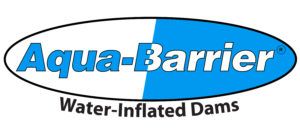The global community has grown increasingly more environmentally conscious in every aspect of life. More and more consumers are making green choices and businesses, too, are undergoing efforts to reduce their carbon footprints. Public sentiment and increasing regulations have brought this to the forefront of construction planning and execution as well. The good news is going green can also help increase your productivity, efficiency, and bottom line.
Environmental Considerations in Construction You Need to Know
At the end of the day, construction generates a lot of waste. It’s a fact that’s hard to get around. While it may be impossible to completely eliminate the environmental impact of your construction projects, you can significantly reduce it. Here’s how:
Energy efficiency
During the construction process, it’s important to increase your energy efficiency as much as possible. Using old, outdated tools and equipment decreases your productivity and requires more energy consumption to complete the job. One great way to keep your operations as energy efficient as possible is keeping your machines, equipment, and tools repaired and updated. The more productive you are and the faster your projects are completed, the less energy you’ll use.
Green materials
There are a number of green materials in research and production that can be used in place of traditional materials. Often, they are reclaimed or recycled from other construction projects which reduce or eliminate a portion of your initial construction costs. Many of these materials are becoming more and cost-effective while the cost of traditional materials is going up. What’s more, they typically make it much easier for you to conform to ever-more stringent and numerous building codes and regulations.
Reduced waste
Reducing the waste produced in construction projects begins with your project planning. Establish, track, and document your waste reduction goals. Research and identify materials that can be reused or recycled. Maximize use of your materials and avoid excess materials as much as possible. Choose reusable products as much as you can such as inflatable bladder dams in place of traditional cofferdams or sandbags.
Better tools and equipment
When choosing your tools and equipment, look for tools designed to increase productivity, lower energy use, and reduce man-hours. Newer products are typically designed for better productivity and reduced environmental impact. You may pay more upfront for these tools, but they’ll save you money in the long run.
Long-term: sustainability
In addition to environmental concerns during construction, builders also need to include a plan for long-term sustainability. In other words, how will the facility continue to be environmentally friendly over the long haul? This includes maximizing overall efficiency with an integrated design, water management, energy efficiency, and building location.
Building the Future
We, as a society, are working hard to create a better future with a lower overall impact on the environment. With each new construction project, builders are becoming more and more environmentally conscious. The good news is, while it used to be more expensive to go green, advancements in technology and product availability have now made it more cost-effective in many cases. Help create a better tomorrow. Use this guide to environmental considerations in construction to get started going green in your company.
To learn more about streamlining your dewatering processes using inflatable bladder dams, Contact Us.


